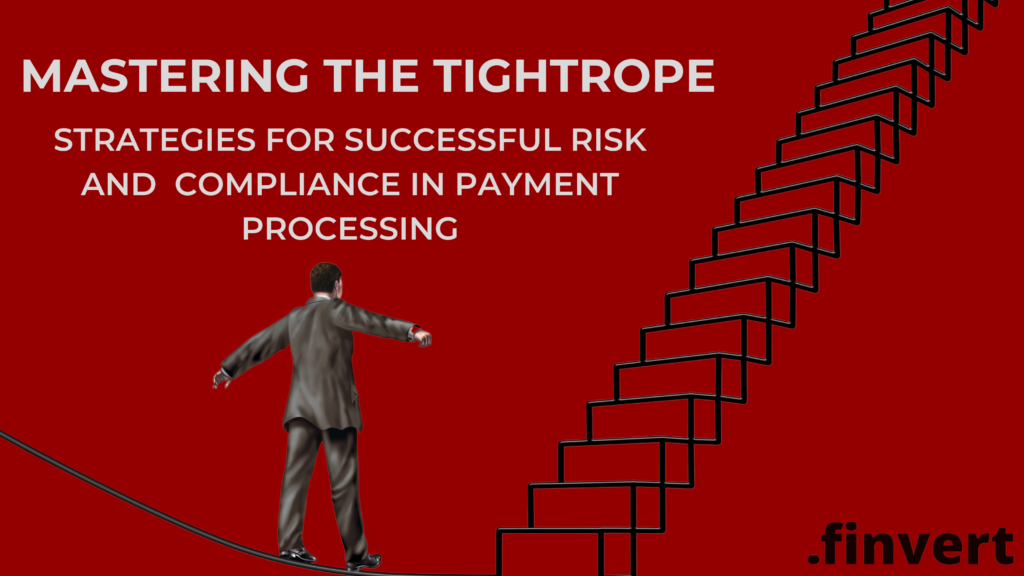Introduction
In the dynamic world of payment processing, risk and compliance are crucial factors that can make or break a business. Striking the delicate balance between maximizing revenue and adhering to regulatory requirements is akin to walking a tightrope. In this comprehensive guide, we will explore strategies to help you master this tightrope act, ensuring successful risk management and compliance in payment processing. Get ready to navigate the complexities of the industry and safeguard your business’s reputation and longevity.
Understanding Risk and Compliance in Payment Processing
Payment processing involves a multitude of risks, including fraud, data breaches, money laundering, and regulatory non-compliance. These risks can result in financial losses, reputational damage, and legal consequences. Compliance, on the other hand, refers to the adherence to relevant laws, regulations, and industry standards designed to protect consumers, prevent illegal activities, and maintain the integrity of the financial system.
The Consequences of Inadequate Risk and Compliance Practices
Failure to prioritize risk management and compliance in payment processing can have severe repercussions:
- Financial Losses: Inadequate risk management exposes businesses to fraudulent activities, chargebacks, and financial losses. Compliance failures can result in costly penalties, fines, and legal fees.
- Reputational Damage: Data breaches or non-compliance with regulations can irreparably damage a company’s reputation. Negative publicity and customer mistrust can drive away existing customers and deter potential clients.
- Legal Consequences: Non-compliance with regulations can lead to legal action, investigations, and sanctions from regulatory authorities. These consequences can disrupt operations, drain resources, and even lead to the closure of the business.
Strategies for Successful Risk and Compliance Management
- Comprehensive Risk Assessment: Conduct a thorough risk assessment to identify potential vulnerabilities in your payment processing operations. Assess risks related to fraud, data security, money laundering, and regulatory compliance. This assessment forms the foundation for developing effective risk management strategies.
- Robust Fraud Prevention Measures: Implement advanced fraud detection tools and techniques. Employ technologies such as machine learning algorithms and artificial intelligence to detect and prevent fraudulent transactions in real-time. Regularly review and update fraud prevention measures to stay ahead of emerging threats.
- Data Security and Privacy: Protecting customer data is paramount. Implement stringent data security measures, including encryption, secure data storage, and access controls. Adhere to privacy regulations such as the General Data Protection Regulation (GDPR) to ensure the responsible handling of personal information.
- Compliance with Regulatory Requirements: Stay abreast of the ever-evolving regulatory landscape. Understand the relevant laws, regulations, and industry standards that govern your business. Develop policies and procedures that align with these requirements, and regularly review and update them to ensure ongoing compliance.
- Training and Education: Invest in comprehensive training programs to educate employees about risk management and compliance protocols. Promote a culture of compliance and empower employees to identify and report potential risks or compliance issues promptly.
- Third-Party Due Diligence: If you rely on third-party vendors or partners for payment processing services, conduct thorough due diligence before engaging their services. Ensure they have robust risk management and compliance practices in place to protect your business interests.
- Continuous Monitoring and Auditing: Implement regular monitoring and auditing processes to identify any deviations from established risk management and compliance protocols. Conduct internal audits and engage external experts if necessary to validate your practices and identify areas for improvement.
Collaboration with Industry Experts and Associations
Engaging with industry experts and trade associations can provide valuable resources and insights for successful risk and compliance management. Consider the following:
- Industry Associations: Join industry associations and participate in their events, conferences, and workshops. These platforms offer opportunities to network with peers, gain industry knowledge, and stay updated on the latest trends and best practices in risk and compliance.
- Consulting Services: Engage reputable consulting firms specializing in risk management and compliance. Their expertise can help you navigate complex regulatory frameworks, assess risks, and develop effective risk mitigation strategies tailored to your business.
- Partnerships with Payment Processors: Collaborate with payment processors that prioritize risk management and compliance. Seek providers with a proven track record in implementing robust security measures, fraud prevention tools, and compliance protocols. Their expertise can be invaluable in safeguarding your business and ensuring regulatory compliance.
Staying Ahead of Emerging Risks and Regulations
Risk and compliance in payment processing are ever-evolving fields. Stay proactive by considering the following:
- Technology Advancements: Embrace emerging technologies to enhance risk management and compliance efforts. Explore tools such as artificial intelligence, machine learning, and blockchain to detect fraud, strengthen data security, and streamline compliance processes.
- Cybersecurity Measures: Stay vigilant against evolving cyber threats. Regularly assess and update your cybersecurity measures to protect against data breaches and unauthorized access. Engage cybersecurity experts to conduct penetration testing and vulnerability assessments.
- Regulatory Updates: Stay informed about regulatory changes and emerging compliance requirements. Monitor updates from regulatory authorities, industry publications, and reputable news sources. Engage legal counsel or compliance experts to ensure ongoing compliance with new regulations.
Conclusion
Mastering the tightrope of risk and compliance in payment processing is essential for the success and longevity of your business. By implementing comprehensive risk management strategies, prioritizing fraud prevention, and adhering to regulatory requirements, you can protect your business from financial losses, reputational damage, and legal consequences.
Engage in ongoing collaboration with industry experts, associations, and payment processors to stay informed about emerging risks and best practices. Embrace technology advancements, prioritize data security, and foster a culture of compliance within your organization.
Remember, successful risk and compliance management is a continuous effort that requires dedication, vigilance, and adaptability. By staying ahead of the curve and consistently refining your practices, you can navigate the complex payment processing landscape with confidence and ensure the long-term success of your business.

